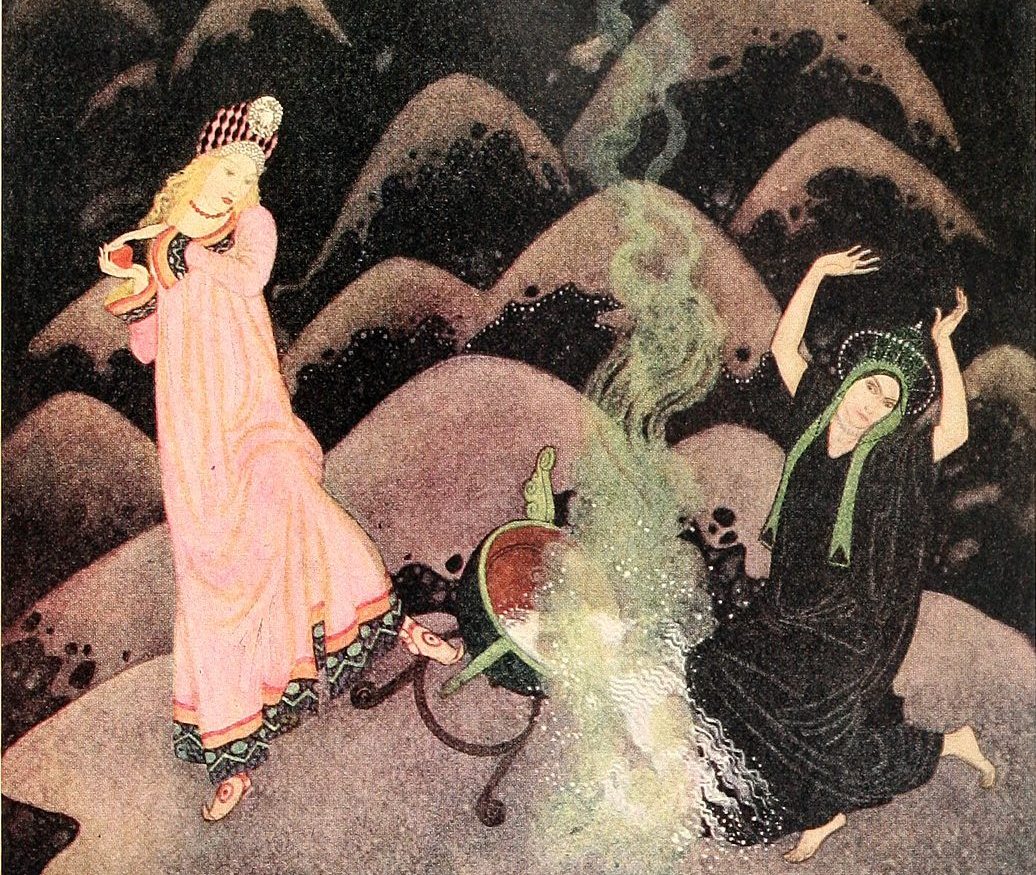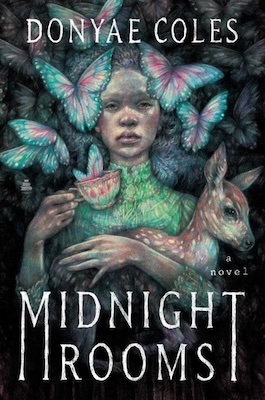Once upon a time in a land far, far away.
Once upon a time there was a castle. A prince. A girl.
Once upon a time, a story starts. A fairytale starts. But all fairytales don’t start that way. All fairytales don’t have happy endings either. Not even the originals, especially not the originals.
And those original versions, they were brutal, strange, twisty little things. Cautionary more than inspiring, so it’s really no surprise that the fairytale would find its way into horror. Or, that horror would find its way back to fairytales. Sometimes as retellings but other times, the familiar bedtime stories are turned (back) into something more sinister.
Midnight Rooms, my debut Gothic novel, makes use of the metaphor of the fairytale throughout as Orabella finds herself inside of the terrifying and enchanting world of Korringhill Manor. In writing this book I wanted readers to hold two ideas in their mind: That something can be wonderful, magical, and still deeply, deeply horrific.
Here are some books that take the ideal fairytales and drag them straight into horror.
The Bloody Chamber and Other Stories by Angela Carter
The Bloody Chamber features popular fairytales retold through a feminist lens. This book was published in 1979 so there are aspects of it that did not age well. Our feelings on feminism are much different now, 40+ years later but this is still a stunning short story collection that has gone on to inspire many writers. These pages contain takes on “Bluebeard” and “Beauty and The Beast” that put new twists on the classics. All of the stories are written with lush language that puts the often hinted at blood and intimacies laid bare. Carter doesn’t create horror in these stories, she lets the original shadow of them seep through in her telling, stripping away the Disneyfication that we’ve grown so used to, leaving behind a beautiful, grim creation.
Fairest Flesh by K. P. Kulski
Fairytales have a certain cadence to them, a rhythm, you don’t have to hear “once upon a time” to know that you’re in Once Upon a Time. Kulski uses that rhythm beautifully in Fairest Flesh. This is a story about Countess Erszebet Bathory. who isn’t a fairy tale but Kulski braids this story with “Snow White” to make something new. The story takes place in Hungry during the 16th century and follows a young girl as she becomes a witch. The writing is lyrical, beautiful and well used to drag you into a story that feels familiar but never safe. The acts in this book are horrifying, a nod to the vicious history and the mythology made of it. Kulski never shies away from the violence and never loses the hold on prose leaving an uncomfortable and beautiful experience in reading.
The Crane Husband by Kelly Barnhill
“The Crane Wife” was one of my favorite stories growing up. It was my first introduction to Japanese folklore and the story of love and sacrifice stayed with me. The Crane Husband is not an exact retelling. It plays with the original folklore, only borrowing bits of it to weave a tale of abuse. The protagonist is not the wife or the crane but a 15 year old girl trapped in the house where this traumatic dynamic exists. The Crane Husband gender swaps the crane from a woman to a man and dives into the allegory of abuse. This book takes the concept of the fable and stretches it to examine the role of trauma in complex family dynamics.
The Book Eaters by Sunyi Dean
The story of a mother trying desperately to save her son doesn’t sound like a fairy tale but The Book Eaters echoes the pace and rhythm of one throughout the horror and sorrow as we follow Devon on her quest to get her son the medicine he needs to stop him from becoming something terrible. Devon herself is not a human, she comes from a vampire like species that dine on books. Her child though is something a bit different. The reader is dragged back and forth from a haunted past to a hunted present and is still, somehow, completely enchanted with this world.
The Child Thief by Brom
Brom is a renowned artist and also a novelist. His novel, The Child Thief, is a dark retelling of Peter Pan that splits time between the modern world and a twisted Neverland where an endless war wages. Nick, a child with an unstable family life from New York City, is pulled into this world by the amoral Peter and must survive the horrors to have a chance of any future. This is a brutal story that never lets up on the absolute terror that a fairyland can be and how vulnerable it is to be a child alone in the world.
Forgotten Sisters by Cynthia Pelayo
Set in Chicago, Forgotten Sisters follows two sisters as they cling to their family home filled with ghosts and memories. Outside, the river they live along is connected to a series of disappearances. As the story progresses, more and more secrets are unearthed. Pelayo weaves a story of family and history with the fairy tale of “The Little Mermaid.” Like the rest of Pelayo’s work, the book confronts crime and real world violence, the very things that many fairytales attempt to warn listeners against.
Red as Blood, or Tales from the Sisters Grimmer by Tanith Lee
Tanith Lee is a master known for her prose and deep, dark storytelling abilities. No stranger to dark fantasy that plunged straight into horror, she had a massive body of work to choose from. But since this opened with a short story collection I thought it would be nice to close the list out the same way. The works in this collection were all published around the early ‘80s and share a lot of similarities with The Bloody Chamber. They are all fairytale retellings, sometimes reimagined in drastically different time periods and settings from the original. But none of that really matters once the stories get rolling because unlike Carter who let the horror of fairytales shine on its own, Lee set out to make them far more violent and bloody.
Take a break from the news
We publish your favorite authors—even the ones you haven’t read yet. Get new fiction, essays, and poetry delivered to your inbox.
YOUR INBOX IS LIT
Enjoy strange, diverting work from The Commuter on Mondays, absorbing fiction from Recommended Reading on Wednesdays, and a roundup of our best work of the week on Fridays. Personalize your subscription preferences here.

